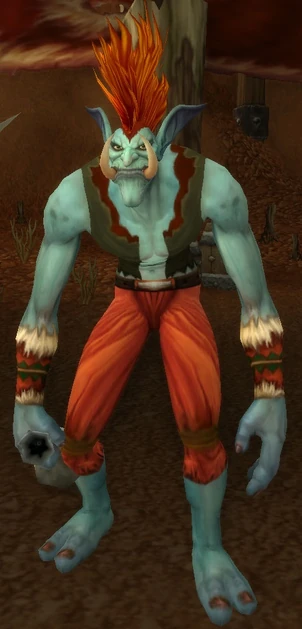(1) Drakkari: I absolutely loved the Zul’Drak zone in WotLK! The entire zone felt like a massive city—one in decay and ruin. I can’t help but imagine what it might have been like if the Drakkari hadn’t been on a path of self-destruction, sacrificing their own Loa to steal their powers. Perhaps they could have rivaled the grandeur of the Zandalari’s city, Zul’Dazar. I agree that Blizzard didn’t do them justice. At the very least, it feels like a missed opportunity. It’s so obvious that a raid tier in Gun’Drak was planned but ultimately scrapped—presumably in favor of Trial of the Crusader (TotC).
Zul’Drak remains a haunting reminder of what might have been—a zone that offered a glimpse into a once-great civilization, undone by its own hubris, and left me yearning for more of the story that was never told.
(2) Zandalari: The role they played in the Mists of Pandaria expansion was incredible. In fact, I’d go as far as to say I enjoyed the Zandalari’s mini-invasion and takeover of the Isle of Thunder far more than the Garrosh storyline and its events. Wouldn’t it have been so much cooler if Mists of Pandaria had focused on a massive Zandalari invasion and conquest, rather than being a soft Horde vs. Alliance conflict that culminated in the Siege of Orgrimmar?
Imagine if the storyline revolved around the Zandalari, whose lands were devastated by the Cataclysm, launching an all-out invasion. Instead of Garrosh seeking the heart of Y’Shaarj, it could have been Zul driving the events forward.
Fast-forwarding to Battle for Azeroth—say what you will about the systems or endgame content, but in terms of lore, story, and thematics, it stands out as one of the best expansions in my view. The Blood Trolls and G’huun, King Rastakhan’s deal with Bwonsamdi, the Vulpera of Vol’dun, and the story of Mythrax all created an incredible narrative.
I do feel for those who played Alliance during that expansion—the Horde-specific questing and lore were just leagues ahead in terms of depth and excitement.
(3) Gurubashi and Farraki: I always think of these tribes as the originals—or at least the first I remember encountering in-game. The Sand Trolls and Jungle Trolls inhabit the southern reaches of each continent: Eastern Kingdoms and Kalimdor, respectively. I think I prefer the Gurubashi tribe slightly more, as they seem to have a stronger presence in the lore and received more attention in the game. That said, I absolutely loved Zul’Farrak—one of my favorite classic dungeons. It would easily make my top 5.
Speaking of nostalgia, a zone that always stands out in people’s minds—both for good and bad reasons—is Stranglethorn Vale. Setting aside the infamous world PvP and relentless ganking, what truly made this zone memorable and dangerous was its rich story and atmosphere. The lore, the jungle vibe, and the constant sense of danger from the Gurubashi trolls all contributed to making Stranglethorn Vale an unforgettable experience.
(4) Amani: I must admit, I know relatively little about the Amani tribe in terms of lore. While these Forest Trolls occupy a significant number of zones in World of Warcraft—stretching from the Arathi Highlands and beyond—they don’t seem to stand out to me as much as the Gurubashi or Farraki.
Despite their presence in multiple zones and expansions, such as Ghostlands and Zul’Aman in The Burning Crusade, the Amani have never quite captured the spotlight in the same way as the other troll tribes. Perhaps this is because their story, rooted in a distant past, was never fully explored or presented in the game. In contrast, the Gurubashi and Farraki have had more moments of active villainy or intrigue within the game’s narrative, making their presence more memorable for me.
(5) Darkspear: I agree with you—it often feels like the Darkspear Tribe is treated as an afterthought. Unlike other troll tribes, they lack grandeur, monumental cities, or significant impacts on zones. There are no grand temples or sprawling ruins tied to their history, making them feel less distinct when compared to tribes like the Zandalari or Amani.
This is partly due to the fact that the Darkspear are a younger tribe with less established lore and development. Their story is intrinsically tied to the Horde, and much of their identity revolves around their role as loyal allies to the faction rather than as a standalone culture. While this makes sense narratively, it also means that their unique heritage and contributions often fade into the background of the larger Horde storyline.
Still, the Darkspear have had their moments of heroism, particularly under the leadership of Vol’jin, whose wisdom and sacrifices left a lasting impact on the Horde. Perhaps with further storytelling and deeper exploration of their roots, the Darkspear could step out of the shadows and develop a more defined identity within the Warcraft universe.
Closing Thoughts
Trolls will always have some of the best lore and storytelling in World of Warcraft, both past, present, and future. Who knows? Perhaps one day we’ll discover that the Blood Trolls of Nazmir were never truly defeated. In secret, they’ve made their way to the shores of Stranglethorn Vale, where they are once again performing dark rituals to rebirth the Blood God Hakkar and unleash the Blood Plague upon the citizens of Azeroth… Zul’Gurub 3.0. 




